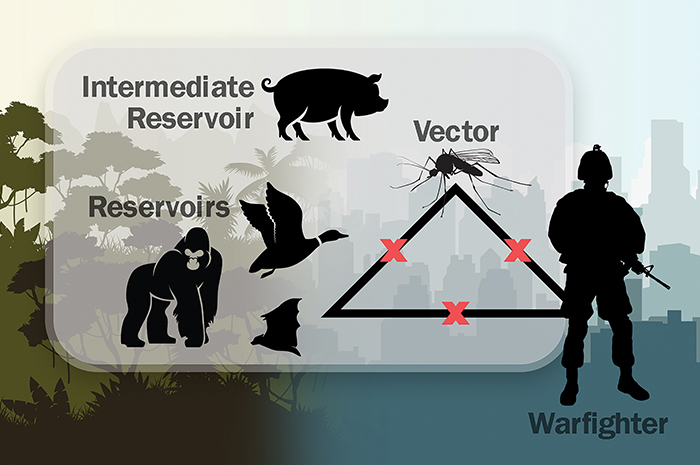Preemptive Strike on Emerging Epidemics

©DARPA
Many virulent diseases that emerged or resurfaced last year—including avian flu, Ebola, yellow fever, and Zika—share a common trait. They all originated in other animals and made the leap to humans either by direct contact or via insect bites.
DARPA, the Pentagon’s high-concept research agency, recently announced plans to fund a 3½-year study to curb such crossovers. Called PREEMPT, for Preventing Emerging Pathogenic Threats, the project seeks to model how viruses mutate in animals and then figure out how to halt those mutations before humans are placed at risk. For DARPA, containing disease threats is another way to protect troops, who often must venture into war or disaster zones where the risk of encountering novel pathogens is high. Researchers will be trying to understand how viruses evolve within a species and looking for evolutionary bottlenecks that could be exploited to halt dangerous mutations—like the tiny change that made Zika damage babies’ brains. They also will test intervention approaches in a controlled lab setting. If successful at suppressing interspecies jumps, says a DARPA official, “we’ll vastly diminish the possibility of future viral pandemics.”
Meanwhile, at the Cary Institute, disease ecologist Barbara Han is studying ways to predict and preempt disease outbreaks using artificial intelligence and computer modeling:
This article was adapted from chief correspondent Thomas K. Grose’s brief that appeared in the February 2018 issue of ASEE’s Prism magazine.
Filed under: Special Features
Tags: animal to human diseases, ASEE Prism magazine, Biomedical Engineering, DARPA preventing Emerging Pathogenic Threats PREEMPT project, ebola, public health, vector, Zika








